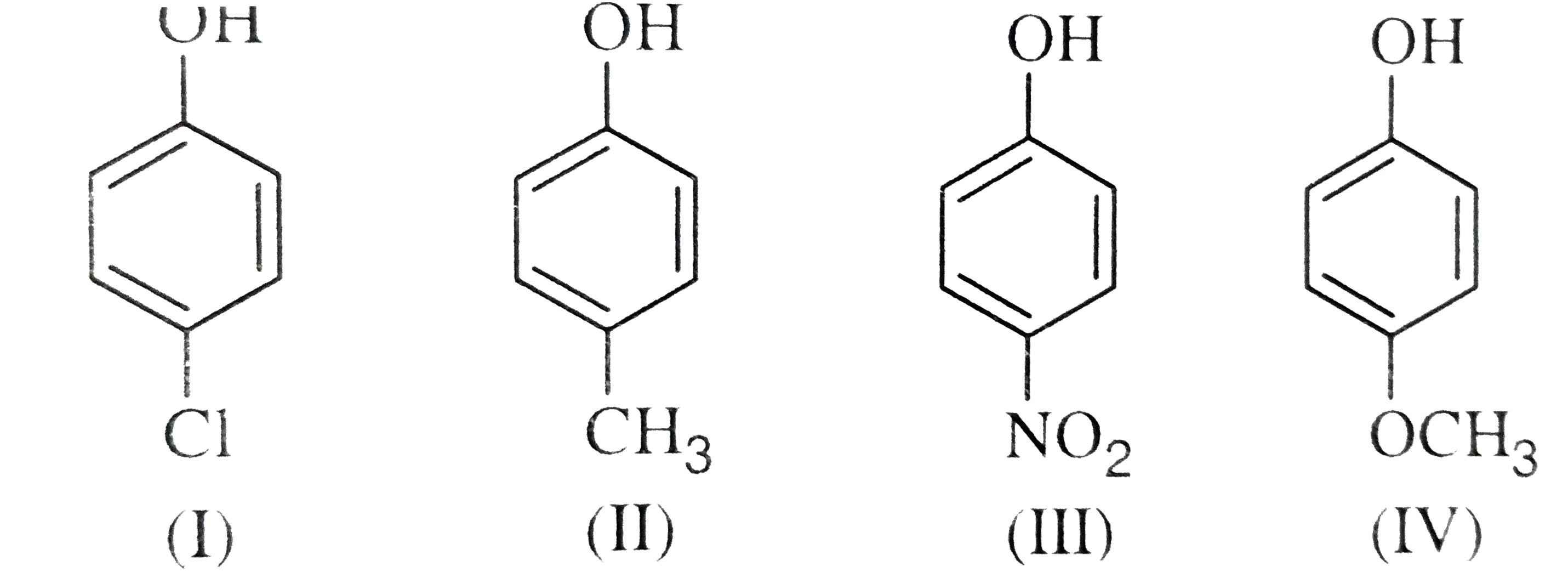When the following five anions are arranged in order of decreasing ionic radius , the correct sequence is :
Se2−,I−,Br−,O2−,F−
I−,Se2−,Br−,F−,O2−
Se2−,I−,Br−,F−,O2−
I−,Se2−,Br−,O2−,F−
The correct Answer is:D
To arrange the given anions in order of decreasing ionic radius, we need to consider their positions in the periodic table and the general trends in ionic size.
1. Identify the Anions: The anions provided are:
- O²⁻ (Oxide ion)
- F⁻ (Fluoride ion)
- Se²⁻ (Selenide ion)
- Br⁻ (Bromide ion)
- I⁻ (Iodide ion)
2. Understand Ionic Size Trends:
- Anions are larger than their corresponding neutral atoms because they gain electrons, which increases electron-electron repulsion.
- As you move down a group in the periodic table, ionic size increases due to the addition of electron shells.
- As you move across a period from left to right, ionic size generally decreases due to increasing effective nuclear charge.
3. Analyze the Anions:
- Iodide ion (I⁻): Located in Group 17 (Halogens), Period 5. It is the largest because it has the most electron shells.
- Bromide ion (Br⁻): Located in Group 17, Period 4. It is smaller than I⁻ but larger than the other anions listed.
- Selenide ion (Se²⁻): Located in Group 16, Period 4. It is larger than Br⁻ because it is in the same period but belongs to a group with larger anions.
- Oxide ion (O²⁻): Located in Group 16, Period 2. It is smaller than Se²⁻ and Br⁻ due to being in a higher period.
- Fluoride ion (F⁻): Located in Group 17, Period 2. It is the smallest of all the anions listed.
4. Order the Anions by Size: Based on the analysis, we can arrange the anions in order of decreasing ionic radius:
- I⁻ > Br⁻ > Se²⁻ > O²⁻ > F⁻
5. Final Sequence: The correct sequence of the anions in order of decreasing ionic radius is:
- I⁻ > Se²⁻ > Br⁻ > O²⁻ > F⁻
- O²⁻ (Oxide ion)
- F⁻ (Fluoride ion)
- Se²⁻ (Selenide ion)
- Br⁻ (Bromide ion)
- I⁻ (Iodide ion)
- Anions are larger than their corresponding neutral atoms because they gain electrons, which increases electron-electron repulsion.
- As you move down a group in the periodic table, ionic size increases due to the addition of electron shells.
- As you move across a period from left to right, ionic size generally decreases due to increasing effective nuclear charge.
- Iodide ion (I⁻): Located in Group 17 (Halogens), Period 5. It is the largest because it has the most electron shells.
- Bromide ion (Br⁻): Located in Group 17, Period 4. It is smaller than I⁻ but larger than the other anions listed.
- Selenide ion (Se²⁻): Located in Group 16, Period 4. It is larger than Br⁻ because it is in the same period but belongs to a group with larger anions.
- Oxide ion (O²⁻): Located in Group 16, Period 2. It is smaller than Se²⁻ and Br⁻ due to being in a higher period.
- Fluoride ion (F⁻): Located in Group 17, Period 2. It is the smallest of all the anions listed.
- I⁻ > Br⁻ > Se²⁻ > O²⁻ > F⁻
- I⁻ > Se²⁻ > Br⁻ > O²⁻ > F⁻
Topper's Solved these Questions
- PERIODIC TABLE & PERIODICITYBOOK - RESONANCE ENGLISHCHAPTER - PERIODIC TABLE & PERIODICITYEXERCISE - Exercise-2
1 Videos
- PERIODIC TABLE & PERIODICITYBOOK - RESONANCE ENGLISHCHAPTER - PERIODIC TABLE & PERIODICITYEXERCISE - Exercise-3
1 Videos
- PERIODIC TABLE & PERIODICITYBOOK - RESONANCE ENGLISHCHAPTER - PERIODIC TABLE & PERIODICITYEXERCISE - Exercise-1
1 Videos
- P-BLOCK ELEMENTS (HALOGEN & NOBLE GASES)BOOK - RESONANCE ENGLISHCHAPTER - P-BLOCK ELEMENTS (HALOGEN & NOBLE GASES)EXERCISE - APSP PART-3
22 Videos
- QUALITATIVE ANALYSISBOOK - RESONANCE ENGLISHCHAPTER - QUALITATIVE ANALYSISEXERCISE - INORGANIC CHMISTRY(Qualitative analysis)
35 Videos
Similar Questions
Which of the following is arranged in order of incresing radius?
View SolutionThe correct order of decreasing ionic character is
View SolutionWhen the atoms Li,Be,B and Na are arranged in order of increasing atomic radius, what is the correct order?
View SolutionThe order of increasing ionic radius of the following is:
View SolutionArrange the following compounds in order of decreasing acidity:

View SolutionWhich of the following is arranged in decreasing order of size?
View SolutionThe correct order of decreasing ionic radii among the following isoelectronic species is
View SolutionThe correct order of decreasing ionic radii among the following isoelectronic species is
View SolutionThe following acid have arrange in the order of decreasing strength. Identify the correct order. CIOH(I)BrOH(II)IOH(III)
View SolutionArrange the following conformations of ethane in the order of decreasing stability
View Solution
